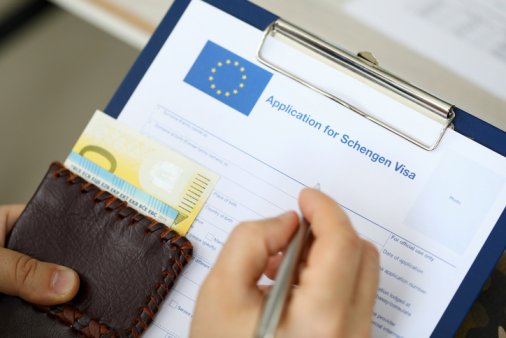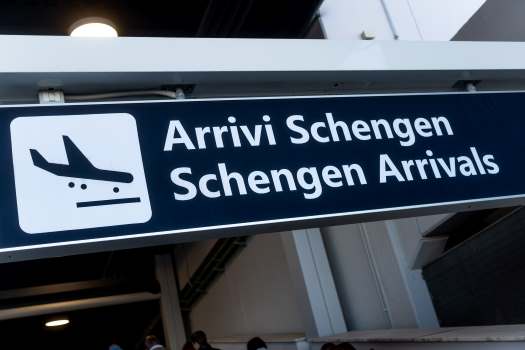Complete Guide on how to Apply for a Schengen Visa
Here’s a complete guide on how to apply for a Schengen Visa from the USA, covering eligibility, required documents, fees, and step-by-step application process.
How to Apply for a Schengen Visa from the USA (2025 Guide)
If you are planning to visit the Schengen area, navigating the process of the visa application is an essential step to begin with. The Schengen Visa is a powerful document that grants access to 29 European nations, allowing for seamless travel across borders without the need for additional visas.
So here’s a guide that’ll walk you through the entire process of applying for a Schengen Visa from the USA. Learn about Schengen Visa eligibility, how to apply, and the application process, along with tips for a smooth journey through the Schengen Area.
What is a Schengen Visa?
A Schengen Visa is a short-stay visa that allows you to travel to any of the 29 Schengen countries for up to 90 days within a 180-day period. The purpose of your visit under this visa could be for tourism, business or even family visits. You can move freely between these countries without border checks, essentially treating the whole Schengen Area as one country for international travel purposes.
The Schengen Agreement was signed in 1985 and fully implemented by 1995. It created the Schengen Area, a zone of 29 European countries that have abolished internal borders for the free movement of people. The visa is to make it easy to travel to multiple European countries with one visa document, and to boost tourism and business in the region.
Now, Schengen visas can be categorized, on the basis of the period of stay and the purpose of travel, as Types A, B, C, D, and LTV. Here’s what these mean.
-
Type A: This is an airport transit visa that allows the holder to access only the transit airport of a Schengen country. The holder is not allowed to leave the transit area of the airport with a type A visa.
-
Type B: This is an airport transit visa, valid only for 5 days, that allows the holder to travel through the Schengen Area before leaving for the final destination outside the Schengen Area.
-
Type C: This visa is a short-term visa that allows the holder to travel through the Schengen zone for up to 90 days over a period of 6 months. Depending on the purpose of travel, it can be classified as:
-
Single Entry (Indicated by “1” on the visa): This allows the holder to enter any of the countries in the Schengen Area only once. After the holder leaves the Schengen Area, re-entry is not allowed even if the visa is still valid.
-
Double Entry (Indicated by “2” on the visa): This allows the holder to enter the Schengen Area twice. After the 2nd exit from the Schengen Area, re-entry is not allowed even if the visa is still valid.
-
Multiple Entry (Indicated by “MULT” on the visa): This allows for multiple entries into the Schengen Area; the holder can enter as many times as he likes within 90 days in a period of 180 days. The total number of days spent, including stays after all re-entries, is summed up until the maximum of 90 days is reached.
-
-
Type D: This is a national visa issued by a Schengen country for the purpose of work, study, or stay. Type D visas can be further classified as:
-
Single entry: This visa allows a single entry to the specific Schengen country; it is issued to persons who will not stay beyond the specific period
-
Multiple entry: This visa allows re-entries into the Schengen country that issued the visa. It is issued for special purposes like study, research, professional activities, or emergency medical cases.
-
-
Limited Territorial Validity (LTV) visa: This visa allows the holder to travel only to a specific Schengen country or countries, but not all of them. This visa is issued only in special cases on humanitarian grounds.
Who Can Apply for a Schengen Visa from the USA?
Whether you are a citizen, Green Card holder, or temporary visa holder in the US, you must know whether you need a Schengen visa to travel to Europe or not. Different rules apply to different groups and situations, so make sure you know what criteria apply to your status in the US.
US citizens don’t need a visa for short stays (up to 90 days in a 180-day period) for tourism, business, or family visits. However, their passport must be valid for at least 3 months beyond their planned departure from the Schengen Area. However, for stays over 90 days, US citizens must apply for a national visa or residence permit for the Schengen country they plan to stay in.
However, non-US citizens living in the US must apply for a Schengen Visa if their home country is not visa-exempt for Schengen. The application requires proof of US residency, travel itinerary, financial documents, and Schengen travel insurance , among other requirements. Applicants must apply at the consulate of the Schengen country they will be visiting first. If visiting multiple Schengen countries they should apply at the consulate of the country they will spend most of their time in.
Where to Apply for a Schengen Visa in the USA?
When applying for a Schengen Visa from the USA, you can submit your visa application at the embassy or consulate of the Schengen country you are planning to visit or through designated visa application centers.
Each Schengen country has its own consulates in the US, and some countries have partnered with visa application centers like VFS Global or BLS International to make the process easier. These centers are more convenient and can handle a lot of applications; they offer services like appointment scheduling, document submission, and biometric data collection.
To know which consulate or visa center to apply to, you need to identify your primary destination within the Schengen Area. The primary destination is either the country where you will spend most of your time or, if your stay is equal across multiple countries, the country where you will first enter the Schengen Area. For example, if you will spend 5 days in France and 3 days in Germany, you should apply at the French consulate or its visa center. If your stay is equal, apply to the consulate of the country where you will first arrive.
Several Schengen countries have consulates in the US that handle visa applications frequently. The French Consulate has offices in New York, San Francisco, and Miami and is a popular choice for travelers to France. The German Consulate has offices in Los Angeles, Chicago, and Houston and handles a lot of applications for travelers to Germany. The Spanish Consulate has offices in Miami, Los Angeles, and New York and is another key point of contact for travelers to Spain. These consulates, along with others of Schengen countries, work with visa application centers to manage and process visa applications.
When to Apply for a Schengen Visa?
Schengen rules allow you to apply up to 6 months before your trip (9 months for seafarers), and it’s recommended that you apply at least 15 days before your departure date. However, applying earlier gives you a buffer in case of any delays or additional document requests.
You must also be aware that the standard processing time for Schengen Visa is 15 calendar days from the date of appointment, but this may vary depending on the consulate or visa center, time of year, and your circumstances. During peak travel seasons like summer and winter holidays, processing time is longer due to the high volume of applications. Some applications may require further scrutiny, especially if additional documents are required, which may extend the processing time to 30 or 60 days.
However, there are several reasons that can cause delays in the application process. Incomplete or wrongly filled-up application forms, missing documents, or unclear travel itineraries can all cause delays. Also, some consulates are busier than others, especially those in major cities, which can take longer to get an appointment and process the application. Security clearance or background checks required for certain nationalities can also add to the processing time.
What Are the Schengen Visa Fees?
The Schengen visa fees are different for applicants of different age groups. For adults, it’s around €90, and for children aged between 6-12 years, it’s €45. Fees may also vary if you are applying for long-term visas or special cases like diplomatic or service passports. Apart from the basic Schengen visa fee, visa service centers may also charge a service fee.
There are certain cases where the Schengen visa fees may be waived as per your status or purpose of travel. Fees are generally waived for:
-
children aged below 6 years,
-
students accompanying teachers on an educational trip, persons traveling for research purposes,
-
representatives of non-profit organizations (aged 25 or less) traveling to attend seminars, or other events organized by non-profit organizations, and
-
Family members of EU/EEA citizens .
Most consulates accept cash or credit/debit card payments during the appointment. Even if your application is denied, the visa fee is non-refundable. Make sure you check all the requirements before submitting your application.
Step-by-Step Guide to Applying for a Schengen Visa from the USA
Schengen visa application generally has several important steps. Here is a step-by-step guide to take you through each stage of the application. Follow these steps to ensure a successful Schengen visa application.
How to Fill Out the Schengen Visa Application Form
You will need to download the Schengen visa application form and fill it out carefully and completely to avoid a refusal. You must submit this application form along with other documents to the consulate of the country you are applying to.
Instructions on how to fill out the application form will vary depending on the consulate you are applying to, but here are some general tips:
-
Read the instructions carefully.
-
Be consistent and correct in all answers.
-
Provide the consulate with your contact information so they can get in touch with you if needed.
-
Check everything before handing over the documents to the consulate.
-
Ensure your passport has 2 blank pages for visa stamps.
-
Ensure your passport is valid for a minimum of 3 months from the intended date of return.
-
Keep a copy of your application for your records. You might need it to refer to, later.
Don’t make common mistakes when filling out the application form, like typos, incomplete or inaccurate information, or unclear handwriting. If possible, type and then print your application.
Documents Required for a Schengen Visa Application
Now that we know how to fill out the Schengen visa application, we will need to gather all the required documents. Here is a list of Schengen visa requirements for your reference:
-
Passport: The validity of your passport should be three months beyond your intended stay in the Schengen Area and have at least two blank pages for visa stamps.
-
Schengen Visa Application Form: Your application form should be filled out and signed with all the information clearly mentioned.
-
2 Photos: Copies of a recent photo (as per ICAO standards) are required as part of the documents. Check the Schengen visa photo requirements to ensure that you provide the correct photographs.
-
Proof of US Residency: This could be a Green Card (for Green Card holders), an employment letter from the employer (for work visa holders), an enrollment letter from the university/school (for study visa holders), and other such documents as proof of US residency.
-
Supporting Documents: Documents stating the purpose of your stay (business, family visit, or tourism), proofs of financial means and accommodations during the stay (like bank statements showing sufficient funds, hotel bookings, or other reservations), and proof of intent to return after your stay (like return flight ticket or letter from your employer stating the intended date of return)
-
Travel Insurance: Travel insurance is mandatory for a Schengen visa, and it must cover medical expenses and repatriation in case of illness or accident with a minimum coverage of €30,000.
You must also check with the consulate or visa application center for any additional documents, depending on your unique circumstances. They will have the most recent information for your Schengen visa needs depending on your status, destination Schengen country, and purpose of visit.
Scheduling and Attending the Schengen Visa Appointment
Once you have submitted your application and all required documents, you will need to book an appointment with the consular officer or visa application center. Some consulates allow you to schedule online, by phone, or in person.
What to expect during your visa appointment:
At your appointment, a consular officer will review your application and documents. He will inquire about your itinerary, purpose of travel, and financial resources and will cross-verify all the details. Dress professionally and be on time for your appointment.
Biometrics collection and document submission:
As part of the process, you will have to provide fingerprints and a digital photo (if applicable). This is for applicant identification. Once the consular officer verifies all your details and you have submitted all documents along with your biometric data, you have completed the Schengen visa application submission.
Waiting for Visa Processing and Tracking Application Status
Now that you have submitted the application, it is time to wait for its processing and a decision to come. Schengen visa from USA processing time is 15 days to 45 days , depending on peak periods or if additional documents are required.
You can reach out to the consulate through their website to know the status of your application or if it is taking longer than the usual processing time.
Once you complete and submit your application, you will receive a tracking ID or reference number. You can use this to track your application through the consulate's website or by contacting the consulate directly.
Check the consulate's official website for instructions on how to track your application.
What to Do if Your Schengen Visa is Approved or Denied
After proper examination of your Schengen visa application and the documents, you will be notified whether your visa is approved or denied. In both cases, it is important to know what to do next.
If your visa is approved, visit the consulate or visa application center to collect your passport. Carefully check the validity dates of your visa to match your travel plans. Read the conditions or restrictions attached to your visa. These may include the maximum number of days you can stay in each country, the requirement to notify the authorities of your arrival, number of re-entries allowed (if applicable), or names of specific Schengen countries you are allowed to enter.
Book your travel arrangements (flights and accommodation) if you haven’t already. Pack your luggage with the essentials for your trip: passport, visa, travel insurance , and other necessary documents. Keep an eye on travel advisories for the countries you’re visiting for any updates or changes.
If your application is refused, you will be notified of the reasons why that happened. The reasons may be incomplete or inaccurate application, insufficient funds, no travel insurance, no ties to your home country, or previous refusals or violations. Contact the consulate to discuss what you can do to fix it.
For example, if you need missing documents, get copies and resubmit them with your new application. In case of errors in your application, correct them and provide updated information. If refusal is due to insufficient funds, gather considerable proof of subsistence, such as bank statements, travelers’ checks, or letters of support.
If it is due to concerns about overstaying your visa, show you have strong ties to your home country by providing documents such as property ownership or employment contracts to increase your credibility. If the visa is refused due to a suspicious itinerary, you will need to adjust the itinerary to align with the purpose of your stay as mentioned in the application.
If you think the refusal is unfair, you may also be able to appeal the decision. The process of appealing a refusal varies, depending on the consulate or visa application center. You need to check the consulate’s website or contact them directly to find out the steps to appeal a visa refusal.
Frequently Asked Questions (FAQs)
1. How many days can I stay in the Schengen Area with a visa?
Schengen visa allows you for a short-term stay in the Schengen Area for a maximum of 90 days within a period of 180 days. This is called the "90/180-day rule". Be careful to track your stay to avoid overstaying your visa, or you will have to incur a fine and face trouble getting a visa in the future.
2. Do I need travel insurance for a Schengen visa?
Travel insurance is mandatory for a Schengen visa and it must cover medical expenses and repatriation in case of illness or accident with a minimum coverage of €30,000.
3. How long does it take to apply for a Schengen visa?
Schengen visa from the USA processing time can vary depending on the consulate or visa application center, time of year, and your individual situation. However, the average processing time is 15 days , but it may take longer in certain circumstances.

Travel Assistance Wherever, Whenever
Speak with one of our licensed representatives or our 24/7 multilingual insurance advisors to find the coverage you need for your next trip. Contact Here
Related Articles
Schengen for Greencard Holders




